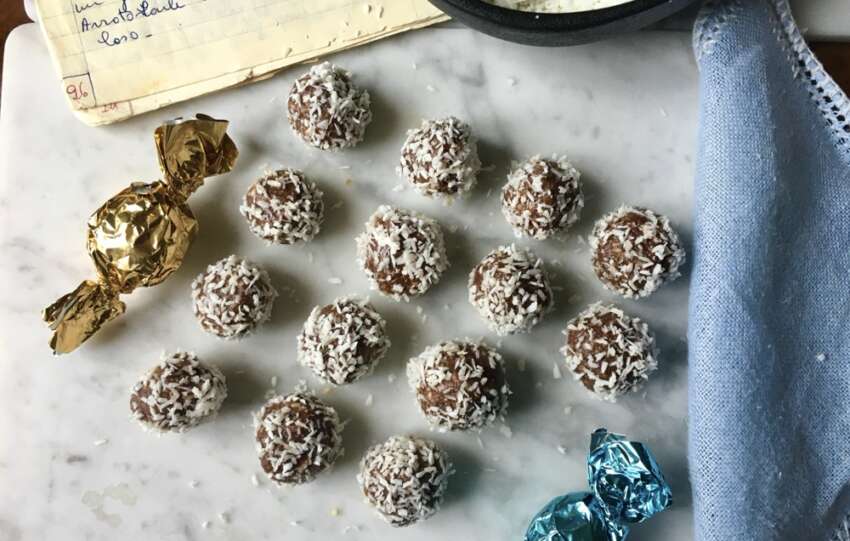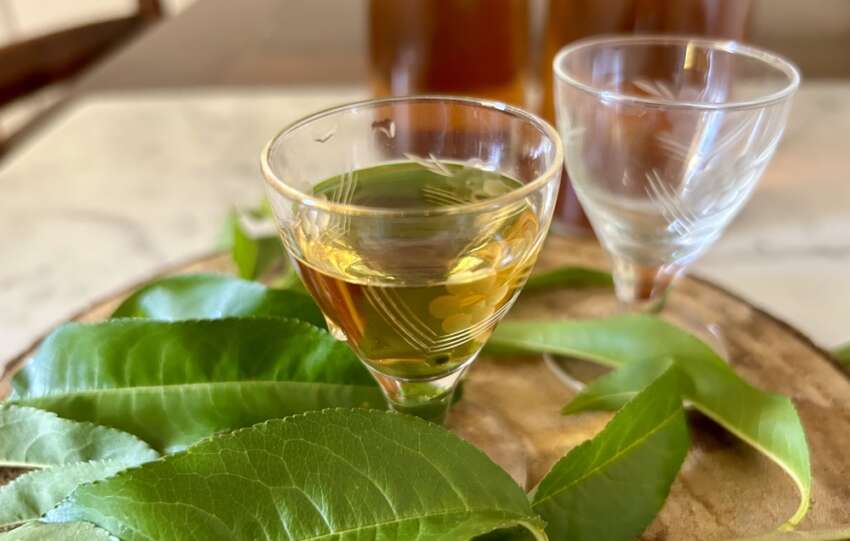When talking about piadina romagnola, we should use the plural.
Exist the high and raised one, the large and thin (unleavened), and the sfogliata (puffed).
Three different types belong to as many areas of Romagna.

Piadina Romagnola: the varieties.
Among piadine, there is leavened piadina. And this kind of piadina is typical of the area between Ravenna and Forlì.
Then there is the large, thin piadina, typical of the Romagna Riviera from Rimini to Cattolica.
Finally, there is the puffed piadina of Romagna you can find in the Romagna-Marches area.
Among the recipes historically associated with the piadina family is the piê fritta (fried piadina, or crescentina in Bolognese), with the classic dough of piadina but cooked in boiling oil. HERE find the recipe for crescentine.
Also belonging to the same family is the cassone, crescione, or in the Imola area, calzone. At the beginning, crescione was filled only with herbs and fresh ricotta. Today with everything you want.
It is a PGI product. The true piadina romagnola has to be made in Romagna. No company outside the territory of origin can produce and commercialize Piadina of Romagna.
In 1959, in San Martino in Strada (province of Forlì), “Lorella’s piadina romagnola” was founded, the first company to produce piadina by hand and industrially.
How to serve leavened piadina romagnola.
As bread: cut it into wedges and bring it to the table in the breadbasket.
This piadina is perfect with grilled meat, fish, and vegetables. My favorite piadina was that my grandmother used to put on the grilled meat, almost cooked, to absorb the aroma of bacon and sausage. We children would go crazy for that bite!
One of the most typical and popular combinations is piadina with sausage and caramelized onions.
The high piadina goes well with another traditional Romagna dish: autumn salad with radicchio and bruciatini (cooked bacon or prosciutto). And in general, in my opinion, it goes well with rustic salads such as tuna, beans, and onion. But also with a fragrant Caprese salad.
Of course, you can serve it with cold meats and cheeses although, perhaps, with cold meats, I prefer the thin piadina from Rimini.
The origin of a recipe.
The piadina celebrated by the Italian poet Giovanni Pascoli at the beginning of the twentieth century, the one prepared by his sister Maria, was still unknown to most people from Romagna.
At that time, many people associated piada, when they knew it was not as widespread as today, with flavors other than white flour and lard. And sometimes, the housewife cooked piadina with eggs and sugar to make the dough special.
The diffusion of piadina is recent history. And, successive the mid-fifties of the ‘900, when the economic boom, after the end of the war, transformed a very poor and, let’s say, often disgusting food, in the wheat flour piadina, fragrant and irresistible that we all know.
From that moment on, piada becomes piadina, which is a diminutive. Instead, the piadone, the superlative of the word piada, remained to indicate a piada made with poor ingredients and, slowly, was – forgotten. Fortunately, a sign that the misery was over.
I leave you with the recipe and the history of piadina romagnola (which you will find below the recipe).
Buona cucina, Monica
Stay in the know!
To receive unpublished recipes, tips, and food stories, sign up for the Tortellini&CO newsletter. You can disable it anytime.
Keep in Touch.
If you like, follow me on Instagram, Pinterest and Facebook.

Food tip.
You can make an excellent piadina romagnola using flours other than 0.
Piadina romagnola recipe (Italian flatbread)
serves 4-5
Ingredients
500g flour 0 or type 1
80g lard or 60g olive oil
fine salt 10g
instant brewer’s yeast 3g, or bicarbonate of soda 5g
lukewarm water, about 300-350ml
Directions
In a bowl mix the flour with the yeast, in the center form a crater where you will put the lard or oil. On the edges sprinkle the salt.
You can also make the dough on the cutting board. It’s up to you.
Start pouring the water a little at a time and start mixing with the flour.
Place the dough on a clean countertop and use your hands to make a smooth, soft, but not sticky dough.
Then form many balls of an equal weight of about 150g each.
Let the dough rest for about 30 minutes covering with a clean tea towel.
It is not a true leavening but a rest (although the piadina will rise a little during the cooking).
On a cutting board, using a short rolling pin (not the long for pasta dough), roll out the piadina not too thinly until you get a disk with a diameter of 15cm.
To cook the piadina, use an earthenware pan or a iron pan.
Cook one piadina at a time on the preheated iron pan.
Prick the piadina with the tines of a fork to keep it from bubbling, and cook for about 3 minutes before turning the piadina over, poking again, and cooking for another 3 minutes or so.
Prepare a clean dish towel to wrap the piadina and keep warm while you cook the others.
If you don’t consume them right away, you can store them for a few days in the refrigerator or freeze them.

A recipe with a history.
Like all unleavened bread, it has ancient origins common to many cultures.
With that said, in the absence of sources, historians consider the relationship between piadina and the older versions, the Byzantine or the Roman mensa (a cereal flatbread used as a dish), to be unlikely.
Certainly, piada is a focaccia known in Romagna since the Middle Ages. And this, in addition to the certainty that even the medieval one was not the piadina we eat today, is one of the few definite notes about this flatbread.
In 1909, Pascoli described it as the “national bread of the Romagna people”, but it was not widespread throughout Romagna. In 1932, Eugenio Cavazzuti, a Romagna intellectual, wrote that “north of Ravenna it is almost unknown, at least in the municipalities of Alfonsine, Fusignano, and Bagnacavallo, and others”.
To complicate the item, the etymology of the name itself contributed: in Romagna, the word piè or piê did not have a unique meaning. Not for nothing, this word also indicated focaccia, sweet or savory, leavened, with or without eggs, fried or baked.
When it was called piada.
For centuries we have no reliable information about this recipe.
We can only imagine that unleavened dough was made, as it is everywhere in the world, and that from that way, century after century, the piadina was born.
The first documented mention of food called ‘piada’ dates back only to the 14th century (Descriptio Romandiole, 1371, a census statistic compiled for tax purposes by Pope Urban V). And in any case, they were large, leavened focaccias, probably seasoned with lard, more similar to what we now call ‘spianate’.
Over time, and up until most of the 20th century, the word piada encompassed a wide range of different types of focaccia and flatbread: leavened and unleavened, seasoned or unseasoned, cooked in different ways (even on the grill or under the ashes).
And, above all, it was a bread made from poorer grains, chestnuts, broad beans, chickling peas. In case of famine, people use acorns, bran, and even sawdust. It was poor and, let’s face it, disgusting food.
In 1572, in a catalogue raisonné of edible plants, the Rimini naturalist Costanzo Felici, writing about wheat and the various types of bread, refers to a kind of piada which would later become ours, and also mentions the flaky piada, which in Pesaro and Urbino is called crescia.
In 1622, Giacomo Antonio Pedroni, a priest from Sant’Arcangelo who had become rector of Rimini cathedral, wrote in his diaries about the rising prices of foodstuffs and that many people could eat piadina made with sarmenti (vine shoots) and broad beans. Two centuries later, the 1818 text by the Forlì historian Placucci on the customs and traditions of the peasants of Romagna does not mention piada.
Food for the poorest until the 1950s.
During the 19th century, the massive spread of maize imposed this flour as the ingredient for making piadina.
In the ‘Inchiesta Agraria e sulle condizioni della classe agricola‘ (‘Agricultural survey and the conditions of the agricultural class’) conducted between 1876 and 1881 throughout Italy, which had recently become a unitary nation, there is mention of two piade. In the monograph on the Cesena, in 1879, Federico Masi, after a hasty reference to the peasant version, talks about the rich recipe that only appears on the tables of rich people at parties.
Piadina and pellagra went hand in hand for a long time to come.
In a health survey of 1899 on illnesses caused by under- and over-feeding, health officers of several municipalities wrote that schiacciate, focacce and piade made of maize, cooked on the iron, often raw inside, were the daily diet of farmers and the poor.
Subsequent surveys carried out between 1940 and 1952 (!) on the eating habits of the rural population showed that there were still many pockets of poverty in Romagna and that it was still made of maize.
In those same years, piadina began to spread throughout Romagna, quickly becoming the bread of the Romagna people that we all appreciate today.


